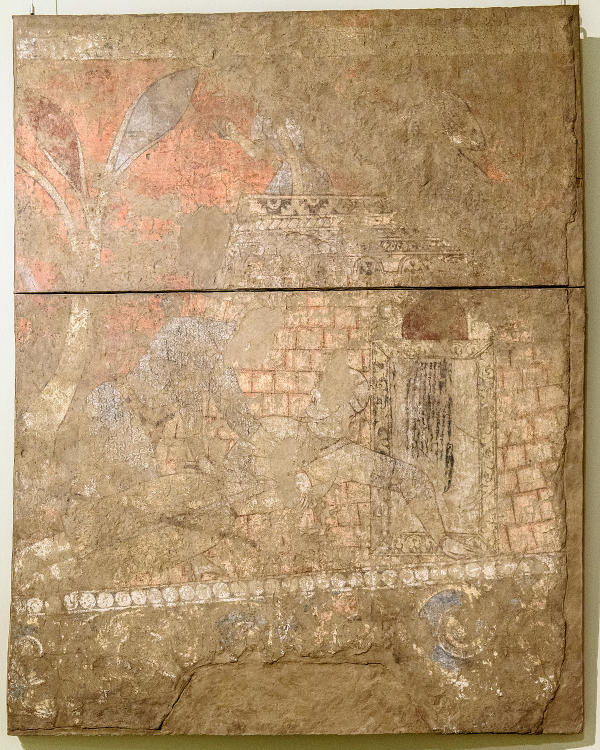
Create an Amazon Business Account
Duel Outside a Castle. Sogdian mural from Panjakent

A larger image of this Wall-painting: Duel Outside a Castle. Piandjikent, early 8th century AD. State Hermitage Museum, St. Petersburg.


CASTLE WALLS
Painting with glue paints on dry loess plaster
First half of the 8th century
Penjikent. Sector XXII, room 1
Accession: from excavations in 1967
State Hermitage Museum, St. Petersburg.
The theme of the painting, as one can assume, was some kind of epic narrative, which consisted of a number of separate episodes. This fragment is the outcome of a duel between two characters. The scene takes place at the walls of the castle, to the left of which is a tree with three large leaves. In the foreground are two warriors - one of them, dressed in chain mail, knocked his opponent to the ground, crushing him with his knee. The castle wall depicts the figures of two women throwing stones at the attacker, one stone hit him in the shoulder. Perhaps this scene or the whole narrative is explained by the inscription made on the opening of the passage to the castle. Unfortunately, it is heavily erased and so far only a few words and the name of, apparently, one of the characters have been read.
Photo by Oleg Belaychuk
Fig. 51. Penjikent. Sector XXII. Room 1, northwest corner. Drawing of the grapple fight.
In another case (room 1 of sector XXII) a warrior on horseback directs a spear into the chest of a foot warrior, who draws a sword from its scabbard. The spearman holds the spear from below with his left and right arms bent at the elbow and extended forward and behind his back (Fig. 51). The main purpose of the spear in battle among the Sogdians is a ramming blow with the entire mass of a heavily armed rider.
...
On the Panjikent wall paintings, characters dressed in chain mail are depicted repeatedly: in room 1 of sector VI - the figure of a standard bearer on the southern wall; on the northern wall is a kneeling figure; three figures near the chariot in the northeastern corner; in the "blue hall" (room 41 of sector VI) - the riders of the third tier of the western wall; warriors of the second tier; on the western and northern walls of room 1 of sector XXII (Fig. 51).
The chainmail shirt of the Penjikent riders is always below the knee, with slits in the front and back, thanks to which the chainmail did not interfere with sitting in the saddle. The cuts were full of odor, so the dismounted warrior was reliably protected from impact. The upper part of the chainmail was tight to the body. The chainmail reached the throat, and the neck was protected by a chainmail aventail extending from the helmet. Chainmail sleeves usually covered three-quarters of the arms, followed by plate bracers (Figs. 51 and 57).
Source: V. I. Raspopova, Metal products of early medieval Sogd, 1980.
Referenced as figure 430 in The military technology of classical Islam by D Nicolle
430. Fresco from Piandjikent Reception Hall XII/1, 7th-8th centuries AD, Transoxanian, Hermitage, Leningrad (Aka S, Yaku)